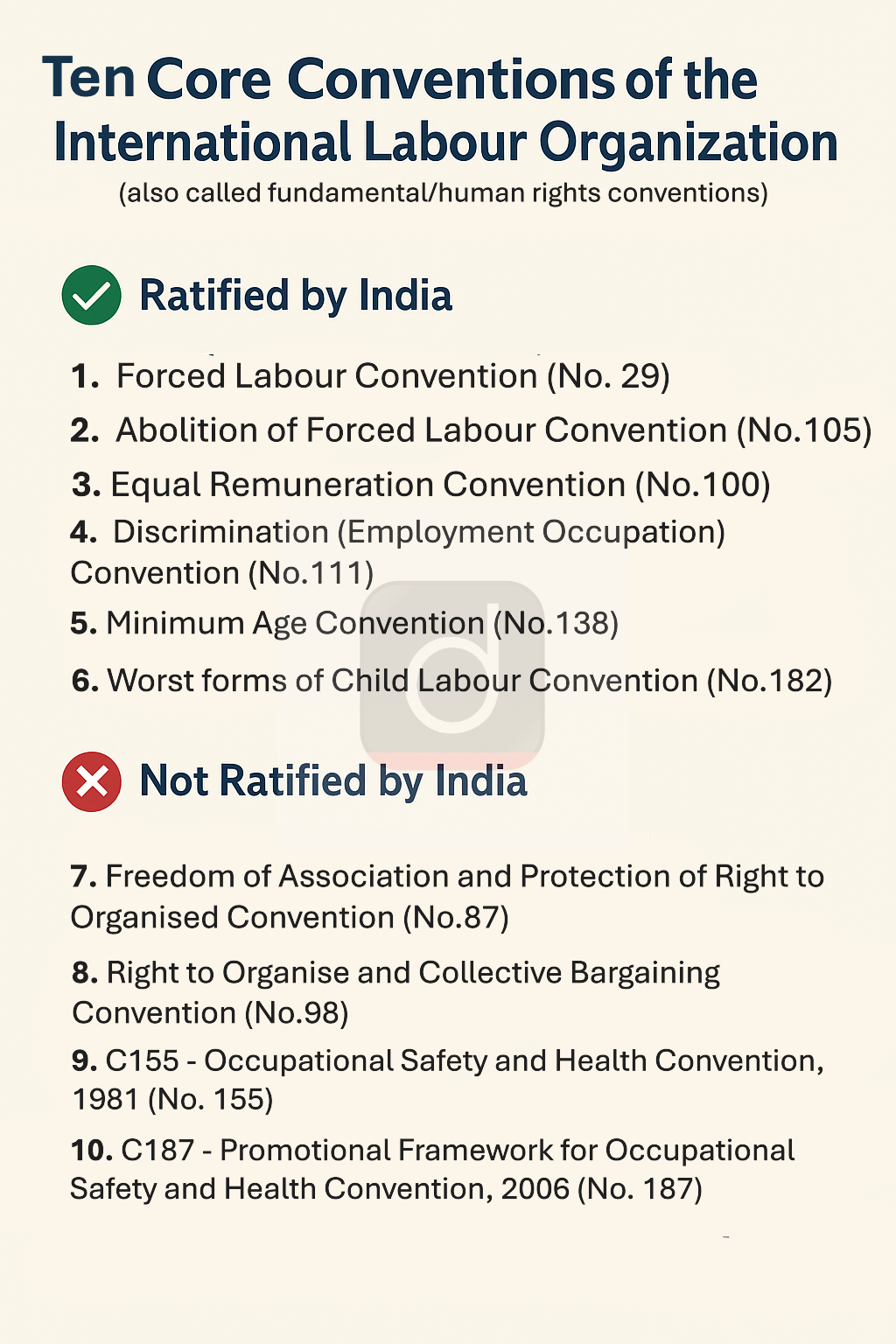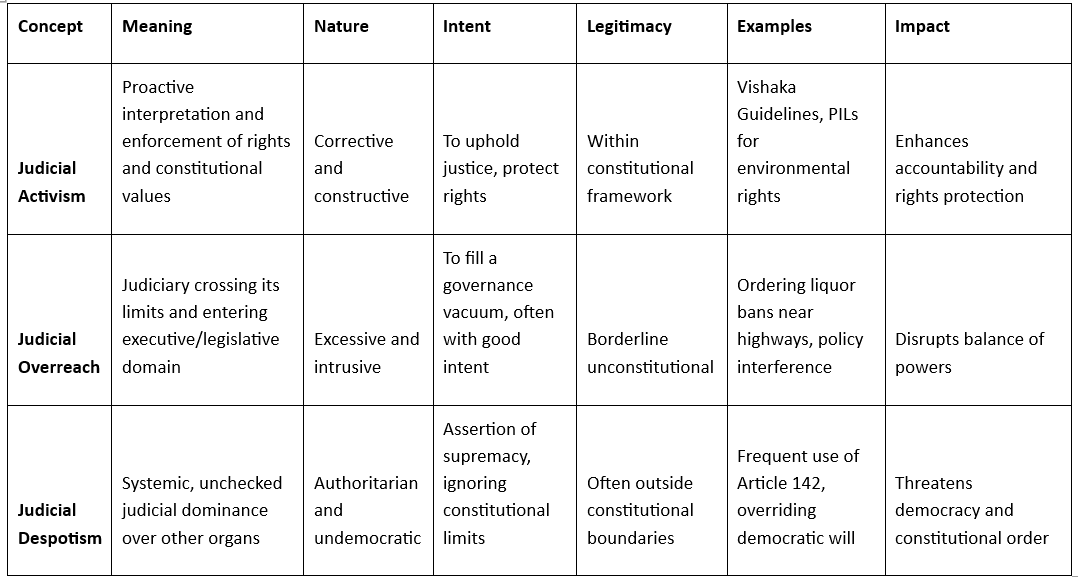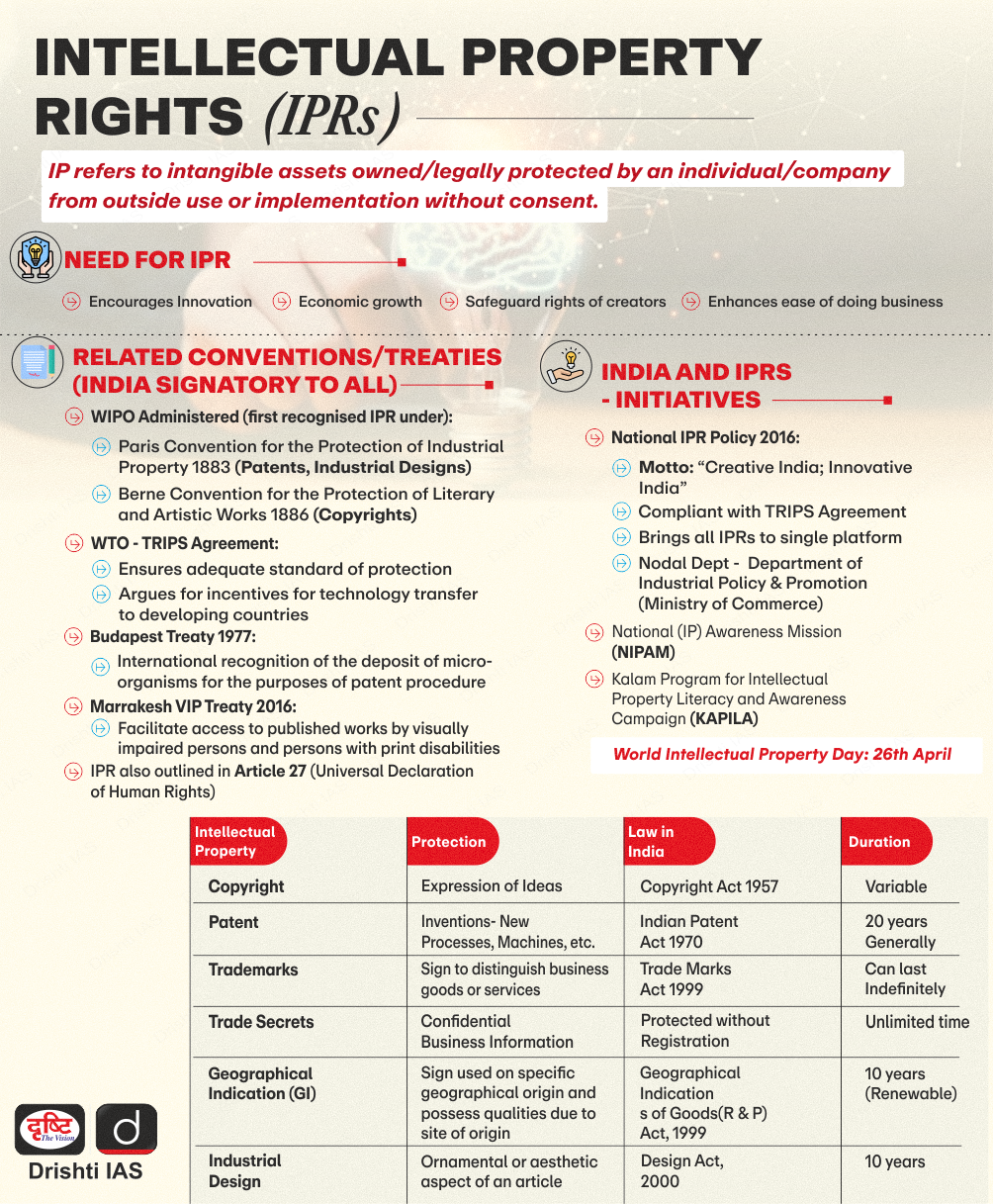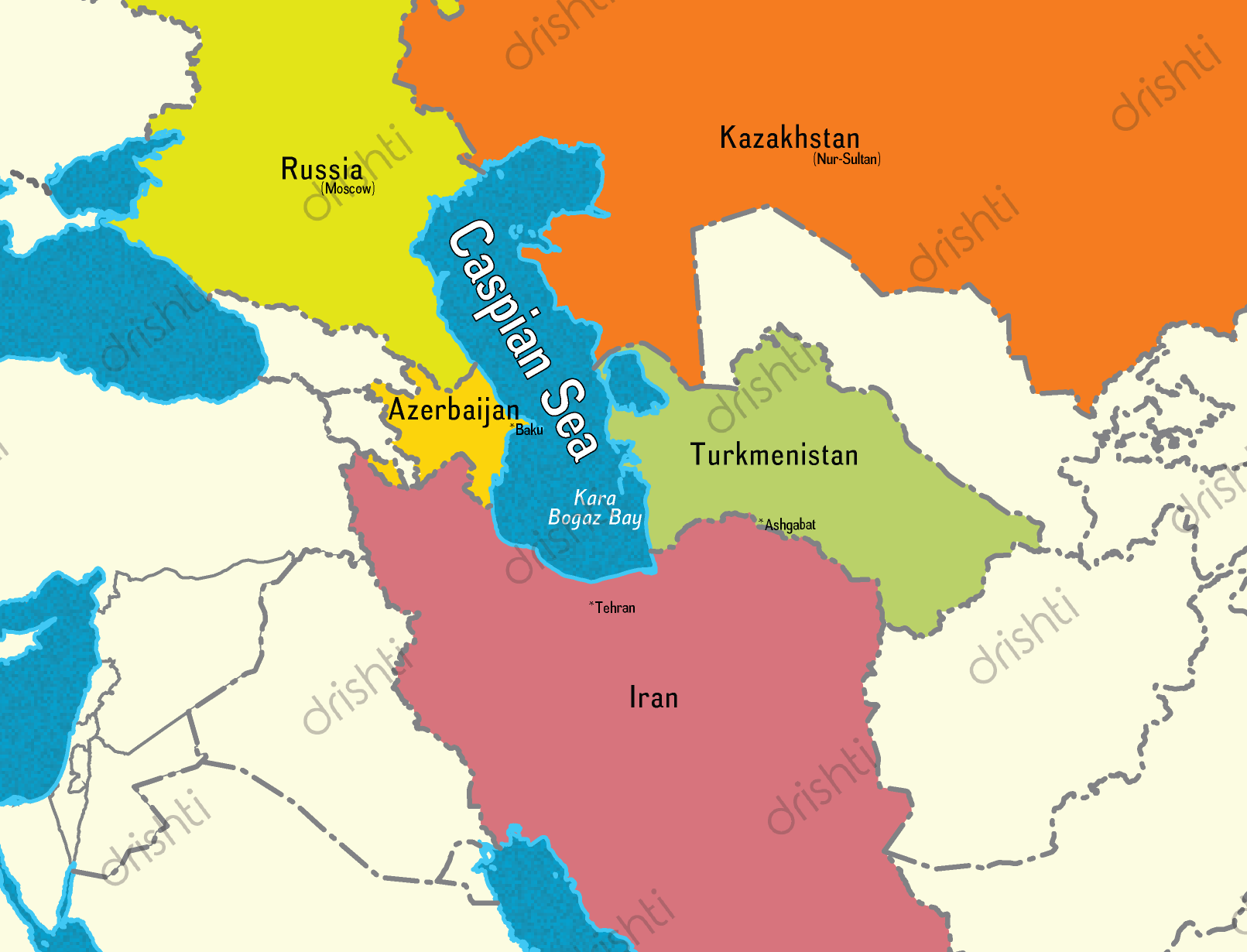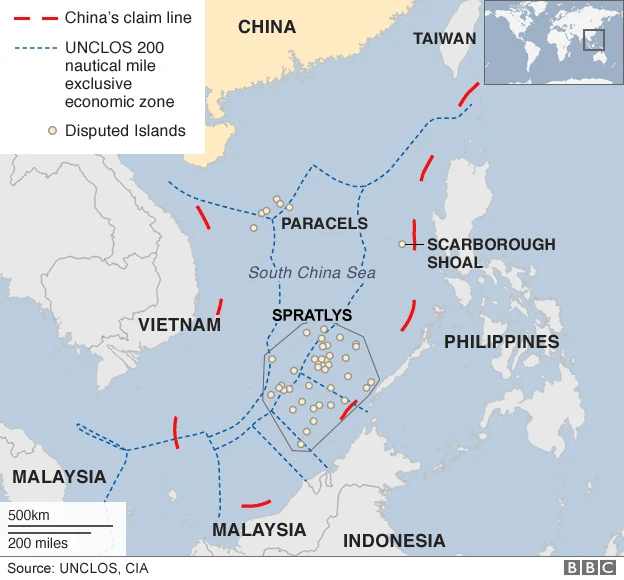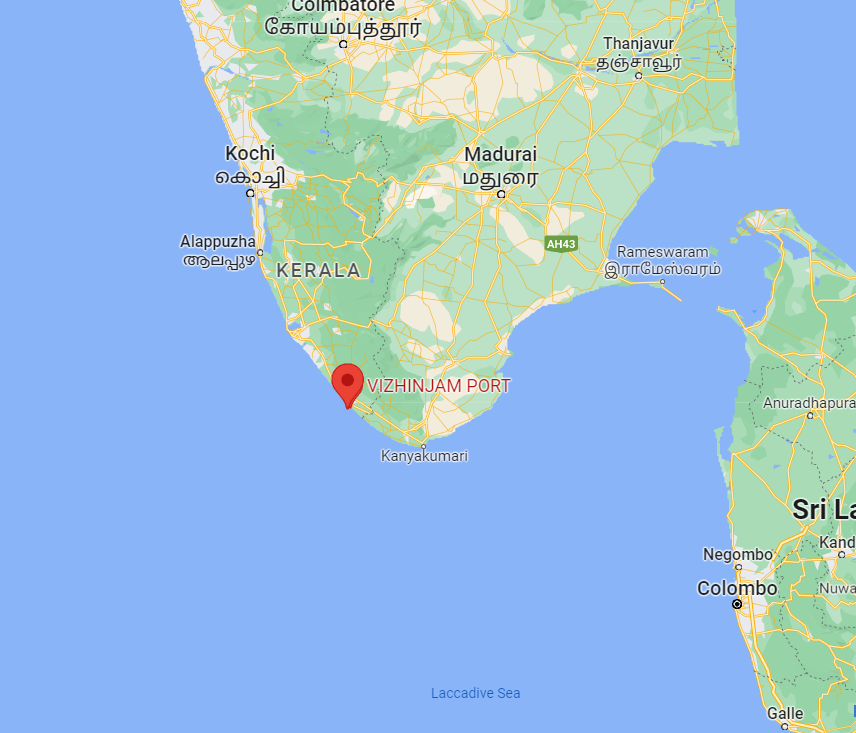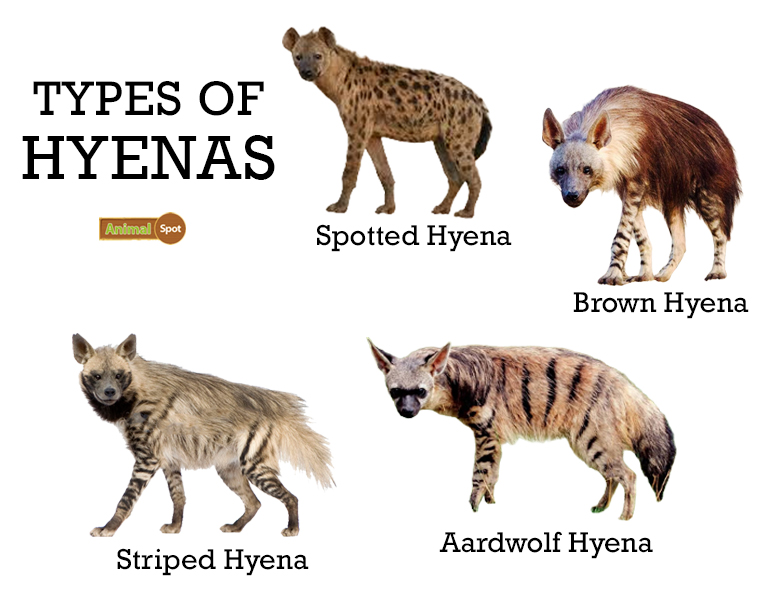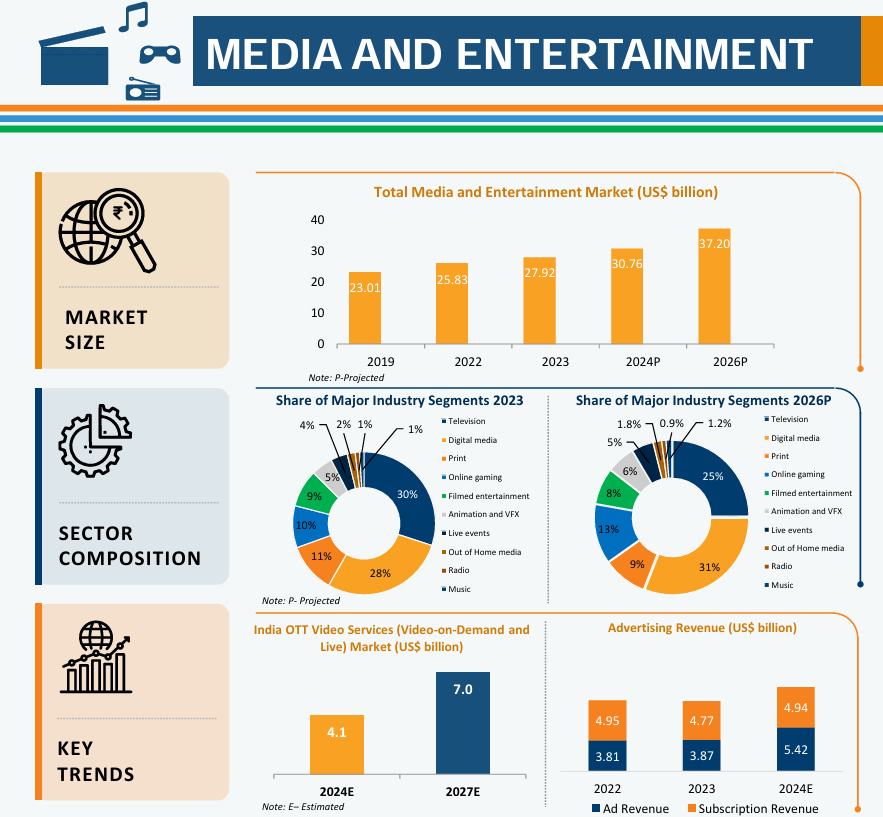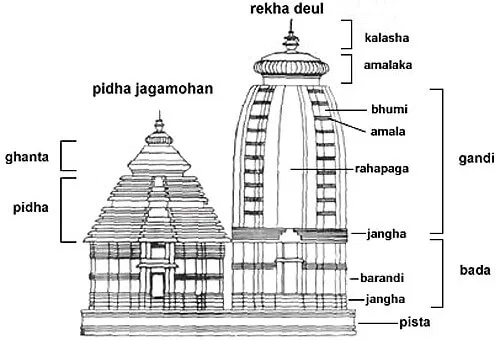Transforming India’s Labour Force
For Prelims: International Labour Day, Bonded labour, National Sample Survey Organization, Gig workers, Demographic dividend
For Mains: Social Justice and Labour Rights, Indian Economy and Employment Issues, Labour Productivity and Economic Growth
Why in News?
On May 1st, the world commemorates International Labour Day to honour the dignity of work and workers’ rights. In India, while the day honours workers' contributions, it also underscores the need for stronger implementation of labour laws to eliminate bonded and exploitative labour.
What is the Current Status of India's Labour Force?
- In 2024, India's overall Labour Force Participation Rate (LFPR) remained relatively stable at 59.6%, with a slight decrease from 59.8% in 2023, according to the Periodic Labour Force Survey (PLFS).
- The Worker Population Ratio (WPR) also saw a marginal decline, moving from 58.0% to 57.7%.
- Unemployment rates experienced a minor increase from 3.1% to 3.2% at the all-India level.
What are the Current Issues Related to India's Labour Ecosystem?
- Widespread Informality: According to the National Sample Survey Organization, around about 39 crore of India’s 47 crore workforce is in the unorganised sector, lacking job security, contracts, and social protection.
- Additionally, 9.8% of workers in the organised sector are informal, highlighting widespread outsourcing and worker vulnerability.\
- While Gross Domestic Product (GDP) formalisation has reached 56% and labour market formalisation lags at 15% (Citi Research 2024).
- Post-Covid, 54 million new jobs were created, mostly self-employment, not formal wage employment.
- Dominance of Low-Quality Jobs and Skill Gap: The International Labour Organisation’s India Employment Report 2024, highlights that low-quality jobs in the informal sector dominate, with migrants and informal workers often facing conditions similar to bonded labour.
- Even where high quality jobs are available, The Economic Survey 2023-24, reveals that only 51.25% of India's graduates are deemed employable, highlighting a significant skills gap.
- Delayed Implementation of Labour Laws: The implementation of the Labour Codes in India is delayed due to objections from trade unions over reduced rights and weakened worker protections. Additionally, the readiness of states to draft and implement the necessary rules has also been a significant factor.
- Additionally, Gig workers (7.7 million gig workers as of 2020-21) are excluded from minimum wage laws, occupational safety regulations, and the Industrial Relations Code 2020, leaving them vulnerable to health risks and lacking dispute resolution mechanisms.
- Gender Disparities in Labour Force: The female labour force participation rate (LFPR) dropped from 41.3% in 2023 to 40.3% in 2024, while men's rose from 78.3% to 79.2%.
- Urban female unemployment stands at 8.2% and only 3% of employed women over 25 hold advanced degrees, highlighting underutilization of educated women and a skills-job mismatch.
- Low Labour Productivity: India ranks 13th globally for the longest working hours, with an average of 46.7 hours per week, and over 51% of employees working 49 hours or more.
- Despite this, India’s labour productivity is relatively low, with a GDP per working hour of USD 8, placing it 133rd globally.
- High-pressure work environments, especially in corporate sectors, are contributing to mental health issues among employees.
- Labour productivity, a key indicator of economic growth and competitiveness, is crucial for improving living standards.
- By 2030, climate change is expected to cause the loss of over 2% of total working hours globally each year, further exacerbating the productivity issue.
How can India Enhance the Productivity and Inclusivity of its Labour Force?
- Enhancing Formalisation: India should prioritize transitioning workers from informal to formal employment by effectively implementing the Labour Codes, 2020 and expanding coverage under EPFO (Employees' Provident Fund Organisation) and ESIC (Employees' State Insurance Corporation).
- Additionally, strengthening schemes like Pradhan Mantri MUDRA Yojana, MSME Udyam and Employment Linked Incentive (ELI), and linking them to infrastructure development in Tier 2 and Tier 3 cities, will promote job creation and economic growth.
- Formalisation will provide access to worker benefits like healthcare, pensions, and job security, improving overall productivity and reducing inequality.
- Boosting Skill Development: Improve the quality and relevance of vocational training under schemes like Skill India and Pradhan Mantri Kaushal Vikas Yojana (PMKVY) and strengthen industry-academia linkages focusing on digital, green, and soft skills for future jobs.
- Indian can learn from Ireland model in this regard by focusing on fostering a strong connection between education and industry
- Revisiting the Labour Codes through Dialogue: India should institutionalize social dialogue mechanisms by reconvening the Indian Labour Conference (ILC).
- Ratifying ILO Convention No. 87 on freedom of association and ILO Convention No. 98 on the right to organize and collective bargaining would promote unionization, particularly for workers in informal sectors.
- This would address the challenges faced by these workers, including lack of job security, limited bargaining power, and poor working conditions, while ensuring fair wages and better working conditions.
- Promoting Gender Equality: Increase female labour force participation through policies like Beti Bachao Beti Padhao and the Maternity Benefit Act (2017).
- Provide safe workspaces, flexible hours, work-from-home options, childcare support, and gender-sensitive policies to boost female labour force participation.
- Enhancing Worker Health and Safety Standards: Improve occupational health and safety standards, particularly in high-risk sectors such as mining, construction, and textiles.
- Ensure strict enforcement of the Occupational Safety, Health, and Working Conditions Code, 2020.
What are the Key Conventions of the International Labour Organization?
International Labour Day
- International Labour Day, or May Day, originated from the 1886 Haymarket Affair in Chicago, where a peaceful workers’ rally for an eight-hour workday turned violent.
- To honor the "Haymarket Martyrs," the Second International declared May 1st as International Workers’ Day in 1889.
- The movement symbolized the global fight for fair hours—8 for work, 8 for rest, and 8 for personal life.
- In India, Labour Day also known as Kamgar Divas or Antrarashtriya Shramik Divas was first celebrated on 1st May 1923, in Chennai by the Labour Kisan Party of Hindustan.
What is Bonded Labour?
- About: Bonded labour, or debt bondage, is one of the most common yet least recognised forms of modern slavery.
- It occurs when a person is forced to work to repay a loan, often under deceptive terms, receiving little or no wages.
- Causes: Bonded labour stems from caste discrimination, feudal land systems, deep poverty, and lack of education and healthcare. Limited livelihood options trap families in inter-generational bondage.
- Urban migration also fuels bonded labour in informal sectors like domestic work, hotels, and child begging.
- Related Constitutional and Legal Provisions: Articles 21 and 23 of the Indian Constitution prohibit bond labour.
- The Bonded Labour System (Abolition) Act, 1976 legally abolished bonded labour and nullified all related agreements. It freed labourers from debt obligations and barred recovery of bonded debts.
- Prevalence in India: In 2016, the government announced a plan to rescue and rehabilitate 1.84 crore bonded labourers by 2030.
- However, as of 2021, only 12,760 bonded labourers had been rescued over a span of five years.
- It is common in agriculture, brick kilns, mining, silk, matchstick, textiles, and firecracker industries, with high prevalence in Bihar, UP, Tamil Nadu, Karnataka, and Punjab.
- However, as of 2021, only 12,760 bonded labourers had been rescued over a span of five years.
Conclusion
India must prioritize the creation of formal, secure, and meaningful employment opportunities. By investing in human capital, fostering gender equality, formalizing the workforce, and aligning skills with emerging industry demands, India can capitalize on its demographic dividend. Immediate and decisive action is essential to shaping a future-ready workforce.
|
Drishti Mains Question: Analyze the challenges faced by workers in India. What reforms can be implemented to ensure better protection for them under labour laws? |
UPSC Civil Services Examination Previous Year Question (PYQ)
Prelims
Q. Pradhan Mantri MUDRA Yojana is aimed at (2016)
(a) bringing the small entrepreneurs into formal financial system
(b) providing loans to poor farmers for cultivating particular crops
(c) providing pensions to old and destitute persons
(d) funding the voluntary organizations involved in the promotion of skill development and employment generation
Ans: (a)
Q. Disguised unemployment generally means (2013)
(a) large number of people remain unemployed
(b) alternative employment is not available
(c) marginal productivity of labour is zero
(d) productivity of workers is low
Ans: (c)
Mains
Q. Most of the unemployment in India is structural in nature. Examine the methodology adopted to compute unemployment in the country and suggest improvements. (2023)
Debate Over Judicial Activism
For Prelims: Judicial overreach, Separation Of Powers, Supreme Court, High Courts, Judicial Review, Fundamental Rights, Collegium System, National Judicial Appointment Commission (NJAC)
For Mains: Restatement Of Values Of Judicial Life, Significance of Independence and Accountability of the Indian Judiciary and Related Concerns, Pendency of Cases.
Why in News?
India is witnessing a growing debate on the judiciary's expanding influence, with concerns raised about 'judicial despotism' clashing with the view that Supreme Court interventions are crucial for upholding constitutional values.
- Some of the recent judgments have ignited discussions on the separation of powers and whether the judiciary has overstepped its constitutional limits.
What is Judicial Despotism?
- About: Judicial Despotism refers to a situation where the judiciary, especially the higher courts, exercises excessive or unchecked power, often going beyond its constitutional mandate, thereby undermining the roles of the legislature and the executive.
- Key Features:
- Overreach into Other Organs: When courts start making laws (legislative function) or directly intervening in administrative decisions (executive function) beyond constitutional limits.
- Frequent Use of Extraordinary Powers: For example, frequent invocation of Article 142 (which allows the Supreme Court to do “complete justice”) without clear legal or constitutional backing.
- Supersession of Democratic Will: When unelected judges consistently override decisions made by democratically elected governments without adequate justification.
- Lack of Accountability: The higher judiciary enjoys wide powers with minimal external accountability, which, if misused, can lead to authoritarian tendencies.
What are the Instances Related to Judicial Activism and Restraints?
Instances Showing Judicial Activism
- Broad Use of Article 142: The SC has, in some cases, been accused of issuing wide-ranging directives (e.g., in mob lynching, Babri Masjid, divorces on irretrievable breakdown) where existing laws already provided a framework.
- Other Instances of Judicial Activism:
- Directing states to distance liquor shops from national highways (500 meters) to prevent road accidents.
- Assuming the power to issue writ of mandamus against the President and Governors for assenting to state bills.
- Providing compensation for victims of the Bhopal gas tragedy (1989).
- Issuing guidelines against sexual harassment at the workplace (1997).
- Granting permanent commissions to women officers in the armed forces (2024).
- Democratic Legitimacy: Judicial activism upholds Constitutional supremacy by ensuring elected governments act within constitutional limits, as affirmed by SC in I R Coelho v. State of Tamil Nadu (2007).
Instances Showing Judicial Restraint
- Selective Intervention Only: The SC has generally upheld existing public policies and rarely invalidates laws. It upheld demonetisation, Rafale deal, NRC in Assam, and UAPA bail restrictions. It refused to recognise same-sex marriage, dismissed Pegasus probe calls, and did not hear key cases on EVMs and CAA.
- Recognised Judicial Restraint: In Shreya Singhal Case (2015), and NJAC case (2015), the Court acted to protect fundamental rights and judicial independence, not to assert supremacy.
- Delay in Hearing Key Cases: Petitions related to Citizenship (Amendment) Act, 2019, Electronic Voting Machine (EVM) and Pegasus surveillance have seen little progress, raising concerns about selective judicial passivity.
- Acceptance of Sealed Evidence: SC has been criticised for undermining transparency and due process (e.g., in Rafale and bail cases).
What is Judicial Review?
- About: Judicial review refers to the power of constitutional courts (SC and HC) to examine the constitutionality of legislative enactments and executive actions.
- Constitutional Provisions: Though the term “Judicial review” is not explicitly mentioned in the Constitution, it is implied in various articles of the constitution such as:
- Article 13, which declares any law inconsistent with fundamental rights as void.
- Articles 32 and 226 which entrusts the roles of the protector and guarantor of fundamental rights to the SC and HC.
- Articles 131–136 empowers the Supreme Court to adjudicate disputes involving individuals, states, and the Union (interpretations by the SC become binding law across all courts).
- Article 137 grants the SC power to review its own judgments
- SC’s Stands on Judicial Review:
- In Kesavananda Bharati v. State of Kerala (1973) and in Indira Gandhi v Raj Narain case (1975), SC held judicial review as a basic feature of the Constitution, immune from even constitutional amendments.
- In the Minerva Mills Case (1980), the SC reiterated that limited government and constitutional supremacy are foundational principles, safeguarded through judicial review.
- Examples of Judicial Review:
- In Shreya Singhal v. Union of India (2015), SC struck down Section 66A of the IT Act as unconstitutional for violating freedom of speech and expression under Article 19(1)(a).
- In Supreme Court Advocates-on-Record Association v. Union of India (2015), (or Fourth Judges Case) SC struck down National Judicial Appointments Commission (NJAC) Act and 99th Constitutional Amendment, protecting judicial independence.
Article 142
- Article 142 of the Indian Constitution grants the Supreme Court the power to pass any decree or order necessary to do "complete justice" in a case.
- It grants the Supreme Court residual, discretionary, and extraordinary powers to fill legislative gaps or address exceptional circumstances where no law exists.
- Landmark Uses:
- Babri Masjid-Ram Janmabhoomi case (2019), allotted alternate land to Muslims.
- Divorce on grounds of irretrievable breakdown, SC granted divorce even when not provided in the Hindu Marriage Act 1955.
Judicial Restraint
- Judicial Restraint is the opposite of Judicial Activism. It is a judicial philosophy that encourages judges to limit the exercise of their power and avoid intervening in policy-making.
- Judges should interpret the law based on the original intent of the Constitution’s framers and precedents set by past decisions.
Way Forward
- Exercise Judicial Restraint: The judiciary should practice judicial restraint, as advocated by the Supreme Court, ensuring that it does not encroach upon the roles of the legislature or executive.
- Promote Judicial Accountability: Internal reforms such as reasoned judgments, peer reviews, and performance audits can enhance accountability while preserving judicial independence and public trust.
- Institutional Balance and Dialogue: All three organs-judiciary, legislature, and executive must adhere to their constitutional spheres, and institutional dialogues should be encouraged to reduce friction and promote separation of power.
- Ensuring Checks and Balances: A robust mechanism for checks and balances should be established among all three organs to ensure a fair distribution of power, preventing any institution from overstepping its mandate, while upholding the supremacy of the Constitution.
|
Drishti Mains Question: Examine the balance between judicial activism and judicial restraint in the Indian constitutional framework. |
UPSC Civil Services Examination Previous Year Questions (PYQ)
Prelims
Q1. Consider the following statements: (2013)
- The Chairman and the Deputy Chairman of the Rajya Sabha are not the members of that House.
- While the nominated members of the two Houses of the Parliament have no voting right in the presidential election, they have the right to vote in the election of the Vice President.
Which of the statements given above is/are correct?
(a) 1 only
(b) 2 only
(c) Both 1 and 2
(d) Neither 1 nor 2
Ans: (b)
Q2. A Parliamentary System of Government is one in which (2020)
(a) all political parties in the Parliament are represented in the Government
(b) the Government is responsible to the Parliament and can be removed by it
(c) the Government is elected by the people and can be removed by them
(d) the Government is chosen by the Parliament but cannot be removed by it before completion of a fixed term
Ans: (b)
Q3. There is a Parliamentary System of Government in India because the (2015)
(a) Lok Sabha is elected directly by the people
(b) Parliament can amend the Constitution
(c) Rajya Sabha cannot be dissolved
(d) Council of Ministers is responsible to the Lok Sabha
Ans: (d)
Mains
Q. Do you think that the Constitution of India does not accept the principle of strict separation of powers rather it is based on the principle of ‘checks and balance’? Explain. (2019)
Personality Rights
Why in News?
The Madras High Court (HC) ordered Meta and Telegram to remove fake accounts and channels misusing choreographer Anita R. Ratnam’s images and deep fake audio in investment frauds citing violation of Personality Rights.
- She is a pioneer of Neo Bharatam, a unique dance style combining Bharatanatyam, Kathakali and Yoga.
What are Personality Rights?
- About: Personality Rights protect an individual’s public persona like name, voice, image, mannerisms as part of their broader right to privacy or property.
- It grants control over the commercial use of one’s name, image, or likeness.
- It can be further divided into two categories:
- Right of Publicity: Protecting an individual’s image and likeness from unauthorized commercial use, akin to trademark rights.
- Right to Privacy: Safeguarding against public representation of one’s personality without consent.
- The Right to Privacy under Article 21 of the Indian Constitution offers the closest legal protection (though not explicitly mentioned).
- Key Related Provisions in India:
- Copyright Act, 1957: It indirectly protects personality rights via passing off and deception against misusing a person’s identity.
- "Passing off" is when goods or services are misrepresented as belonging to someone else, while deception involves misleading use of a person’s name or likeness.
- Under this, creators or performers hold moral rights, including the right to be credited (attribution) and to oppose any alterations that could harm their reputation (integrity).
- Indian Trademarks Act, 1999: Section 14 restricts the use of a trademark that falsely suggests a connection with a living person or a deceased person within the last 20 years unless consent is obtained.
- Information Technology Act, 2000: Section 66C of the act addresses the punishment for identity theft, specifically using someone else's electronic signature, password, or unique identification feature fraudulently or dishonestly.
- Copyright Act, 1957: It indirectly protects personality rights via passing off and deception against misusing a person’s identity.
- Related Key Judgments:
- Krishna Kishore Singh vs Sarla A Saraogi Case, 2021: The Supreme Court (SC) ruled that rights to privacy, publicity, and personality are not inheritable and cease upon the actor's death.
- Justice KS Puttaswamy vs Union of India Case, 2017: The SC affirmed privacy as part of the right to life under Article 21, but noted it can be restricted for a legitimate state aim with proportionate measures.
- Shivaji Rao Gaikwad vs Varsha Production Case, 2015: The Madras HC recognized personality rights, even though there is no specific statutory definition in India.
- Arun Jaitley vs. Network Solutions Private Limited Case, 2011: The Delhi HC noted that an individual's popularity or fame is equally significant online as in real life.
- M. Entertainment Pvt. Ltd. vs. Baby Gift House Case, 2010: The Delhi HC ruled in favor of D.M. Entertainment Pvt. Ltd., holding that the unauthorized sale of dolls imitating singer Daler Mehndi's likeness and songs constituted a violation of his personality rights, thereby affirming his commercial right to control the use of his public image.
UPSC Civil Services Examination Previous Year Question (PYQ)
Q.‘Right to Privacy’ is protected under which Article of the Constitution of India? (2021)
(a) Article 15
(b) Article 19
(c) Article 21
(d) Article 29
Ans: (c)
Q. Right to Privacy is protected as an intrinsic part of Right to Life and Personal Liberty. Which of the following in the Constitution of India correctly and appropriately imply the above statement? (2018)
(a) Article 14 and the provisions under the 42nd Amendment to the Constitution.
(b) Article 17 and the Directive Principles of State Policy in Part IV.
(c) Article 21 and the freedoms guaranteed in Part III.
(d) Article 24 and the provisions under the 44th Amendment to the Constitution.
Ans: (c)
Natural Hydrogen
Why in News?
Natural hydrogen, a potentially clean, abundant, and low-cost energy source, is gaining global attention as a game-changer in the transition to green energy.
What are Key Facts About Natural Hydrogen?
- About: Natural hydrogen, also called geologic hydrogen or white hydrogen, refers to hydrogen gas (H₂) that is naturally produced and stored in the Earth's crust.
- Unlike manufactured hydrogen (from fossil fuels or renewables), natural hydrogen is produced geologically—raising hopes for a sustainable energy revolution.
- Formation: Natural hydrogen exists freely underground, and formed through natural geological processes like-
- Serpentinisation: Reaction of water with iron-rich rocks.
- Radiolysis: Splitting of water by radioactive rocks.
- Organic Decomposition: From deep burial of organic matter.
- Discovery: In 1987, a borehole in Bourakébougou, Mali, revealed a mysterious flame—later found to be 98% pure hydrogen in 2012.
- Major discoveries in France (Lorraine & Moselle) revealed 92 million tonnes of hydrogen (half of global production).
- Major Reserves: Hydrogen seeps have been documented in more than 10 countries, including Australia, the USA, France, South Korea, Canada, and Spain.
- India’s Natural Hydrogen Potential: India’s geological structures make it a high-potential zone for natural hydrogen:
- Ultramafic and mafic rocks, ophiolite belts, and greenstone formations.
- Sedimentary basins in Vindhyan, Cuddapah, Gondwana, and Chhattisgarh.
- Hydrothermal systems and hot springs signal possible underground generation
- Potential Impact: If only 2% of global geological hydrogen is recoverable, it could match twice the energy of all known natural gas reserves and meet global hydrogen demand for 200 years.
- Cost Efficiency: Production cost is estimated at USD 1/kg or less, cheaper than both green and grey hydrogen.
- A global “hydrogen rush” is underway, with companies exploring natural hydrogen rising from 10 in 2020 to 40 in 2023.
Note: Hydrogen makes up about 75% of the universe's mass, but only 0.5–1.0 ppm (parts per million) of Earth's atmosphere. In Earth's crust, it accounts for 0.75% by weight.
What is Green Hydrogen?Click Here to Read: Green Hydrogen |
UPSC Civil Services Examination, Previous Year Question (PYQ)
Prelims
Q. Which of the following is the exhaust pipe emission from Fuel Cell Electric Vehicles, powered by hydrogen? (2024)
(a) Hydrogen peroxide
(b) Hydronium
(c) Oxygen
(d) Water vapour
Ans: (d)
Q. Hydrogen fuel cell vehicles produce one of the following as “exhaust” (2010)
(a) NH3
(c) H2O
(b) CH4
(d) H2O2
Ans: (c)
Climate Change Threatens Caspian Sea
The Caspian Sea is rapidly shrinking from climate-driven evaporation, endangering biodiversity, livelihoods, and regional stability.
- Projected Decline in Water Levels: Even if global warming stays below 2°C, the Caspian Sea is projected to drop 5–10 m, and up to 21 m by 2100 if temperatures rise further.
- Impacts:
- Biodiversity Loss: It threatens endemic species like the Caspian seal (IUCN Endangered) and Beluga sturgeon (an ancient family of large fish, critically endangered).
- Industry: Ports like Baku (Azerbaijan), Anzali (Iran), Aktau (Kazakhstan), Turkmenbashi (Turkmenistan), and Lagan (Russia) could be stranded inland.
- The Volga river, the Caspian’s sole maritime link to the outside world, could become nonviable.
- Hydrocarbon production sites like Kashagan (Kazakhstan) and Filanovsky (Russia) will become landlocked.
- Public Health Risks: Dry seabeds could release dust contaminated with industrial pollutants and salt, akin to the Aral Sea disaster.
- About Caspian Sea: It is a tectonic lake and the world's largest inland water body.
- Three major rivers Volga, Ural, and Terek empty into the Caspian.
- It is bordered by Russia, Azerbaijan, Iran, Turkmenistan and Kazakhstan.
| Read More: Caspian Sea |
Sandy Cay Reef
The Sandy Cay reef dispute between China and the Philippines has sparked renewed tensions, with both claiming sovereignty amid growing militarization.
- Tensions rose as US and Philippine forces conducted Balikatan war drills, which China has condemned as provocative.
- Sandy Cay lies near Pag-asa Island (Thitu) in the Spratly Islands of the South China Sea (SCS). Tiexian Reef is a part of Sandy Cay.
- The reef is claimed by China, the Philippines, Taiwan, and Vietnam.
- About SCS Dispute: It refers to ongoing territorial conflicts over the sovereignty of various islands, reefs, and maritime zones in SCS.
- China claims most of the South China Sea through the "Nine-Dash Line," using island-building and naval patrols to assert control.
- Claimants of SCS: China, Vietnam, Philippines, Malaysia, Brunei and Taiwan.
- Disputed Islands: Paracel Islands, Spratly Islands, and Scarborough Shoal etc.
- In 2016, Hague based Permanent Court of Arbitration ruled that China's claims have no legal basis, but China rejected the ruling and continues to assert them.
| Read More: India Stands with the Philippines in the South China Sea |
PM Inaugurates Vizhinjam International Seaport
Prime Minister Narendra Modi inaugurated the Vizhinjam International Seaport (VIS) in Kerala, marking a significant milestone in India’s maritime infrastructure.
- Vizhinjam International Seaport: It is India's first deep-water transshipment port, designed for container and multi-purpose cargo.
- The port is developed under the Public-Private Partnership (PPP) on a Design, Build, Finance, Operate, and Transfer (DBFOT) basis.
- Strategic Location: VIS, positioned just 10 nautical miles from major international shipping routes connecting Europe, the Persian Gulf, and the Far East, enhances accessibility for large vessels (depth of 18 to 20 meters).
- Technological Advancement: Vizhinjam seaport, India's first semi-automated port, is equipped with an AI-driven control room and the country's first Indigenous Vessel Traffic Management System (VTMS).
- It reduces vessel turnaround times, optimizes traffic flow, and enhances capacity for large ships with real-time updates.
- Economic Impact: The port aims to reduce India's reliance on international facilities, as 75% of transshipment cargo is currently handled abroad.
- By handling transshipment domestically, the port is expected to save India USD 200-220 million in potential revenue loss annually.
- Future Development: The second and third phases of the Vizhinjam port will increase its capacity from 1 million (twenty-foot equivalent units) TEUs to 3 million TEUs annually by 2028.
| Read more: Vizhinjam International Seaport Project |
Hyena
27th April was observed as International Hyena Day 2025 which aims at promoting awareness of hyenas' ecological importance and challenging negative perceptions.
Hyenas (Hyaenidae)
- About: They belong to the family Hyaenidae, which are a group of carnivorous mammals like dogs.
- Habitat: Hyenas are found across diverse habitats in Africa and parts of Asia.
- They are often mischaracterised as the ‘villain of the African Savanna’, given its haunting howls and unconventional appearance.
- Diet: Spotted hyenas are both a skilled predator and scavenger, actively hunting in groups. They frequently engage in kleptoparasitism, where they steal food from other predators.
- Striped hyenas are omnivores, brown hyenas mainly scavenge but also eat small animals and fruits, while aardwolves feed almost exclusively on termites.
- Behaviour: Spotted hyenas live in female-led clans with complex social systems and high intelligence.
- Striped hyenas are nocturnal and solitary, brown hyenas form small clans with nomadic males, and aardwolves are monogamous, living alone or in pairs.
- Ecological Role: Hyenas play a vital ecological role by controlling herbivore populations as predators, preventing disease as scavengers, and recycling nutrients.
| Read More: Conservation Breeding in Indira Gandhi Zoological Park (IGZP) |
Orange Economy
The Prime Minister highlighted India’s rising role in the global creative economy at the WAVES 2025 (World Audio Visual and Entertainment Summit), focusing on the concept of an "orange economy" that emphasizes creativity, culture, and intellectual property.
- Orange Economy: The creative economy (also known as the orange economy) refers to knowledge-based activities that integrate culture, creativity, technology, and IP to drive economic, social, and cultural development, with strong potential to support sustainable development goals.
- India’s creator economy is projected to grow at an 18% Compound annual growth rate, rising from Rs 19 billion in 2023 to Rs 34 billion by 2026, according to Ernst & Young.
- WAVES 2025: It is the first World Audio Visual & Entertainment Summit, held at the Jio World Convention Centre, Mumbai, and hosted by the Government of India.
- It aims to position India as a global hub for Media & Entertainment (M&E), intellectual property, and technological innovation.
- The summit highlights India’s prowess in content creation and tech innovation across Broadcasting, Films, Animation, Gaming, Digital Media, Artificial Intelligence, and more.
- WAVES 2025 features the WAVES Bazaar, a global digital marketplace connecting creators with buyers and investors.
| Read more: WAVES 2025 and Creative Economy |
Jagannath Dham Temple in Digha
The Jagannath Dham temple in Digha, West Bengal, inaugurated in April 2024, marks a significant religious and architectural development.
- Inspired by Odisha’s 12th-century Jagannath Temple (Puri), it is built in Kalinga-style architecture, housing idols of Lord Jagannath, Balabhadra, and Subhadra on the Ratnabedi.
- It features four main structures i.e., Vimana (sanctum), Jagamohan (assembly hall), Nat Mandir (dance hall), and Bhog Mandap (offering hall).
- Built using Bansi Paharpur sandstone, the temple houses stone idols, unlike Puri’s Darubrahma deities carved from neem wood.
- About Jagannath Temple, Puri: It was built by King Anantavarman Chodaganga Deva of the Eastern Ganga dynasty in the 12th century CE.
- The idols are made of wood (neem logs) and are replaced every 12–19 years in the Nabakalebara ritual.
- It is an example of Kalinga architecture (a sub-style of Odisha temple architecture).
- It is one of the Char Dham pilgrimage sites along with Badrinath, Dwarka, and Rameswaram and a major Vaishnavism centre.
- The flag atop the temple flies against the wind, and the Sudarsana Chakra appears the same from every angle (optical illusion).
| Read More: Jagannath Temple |

